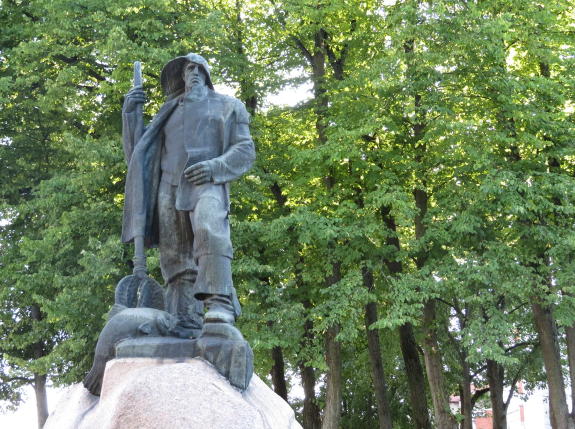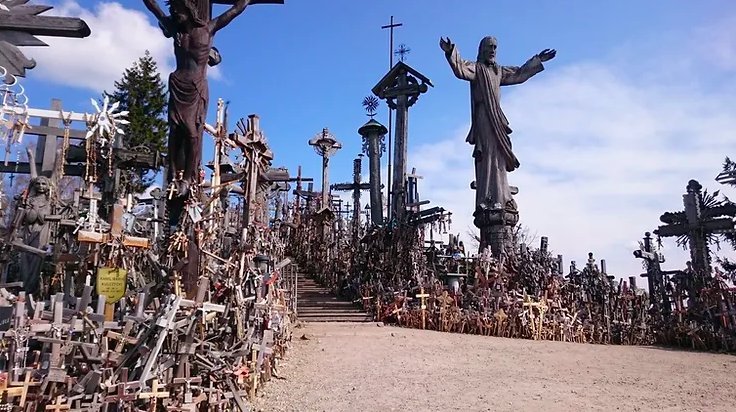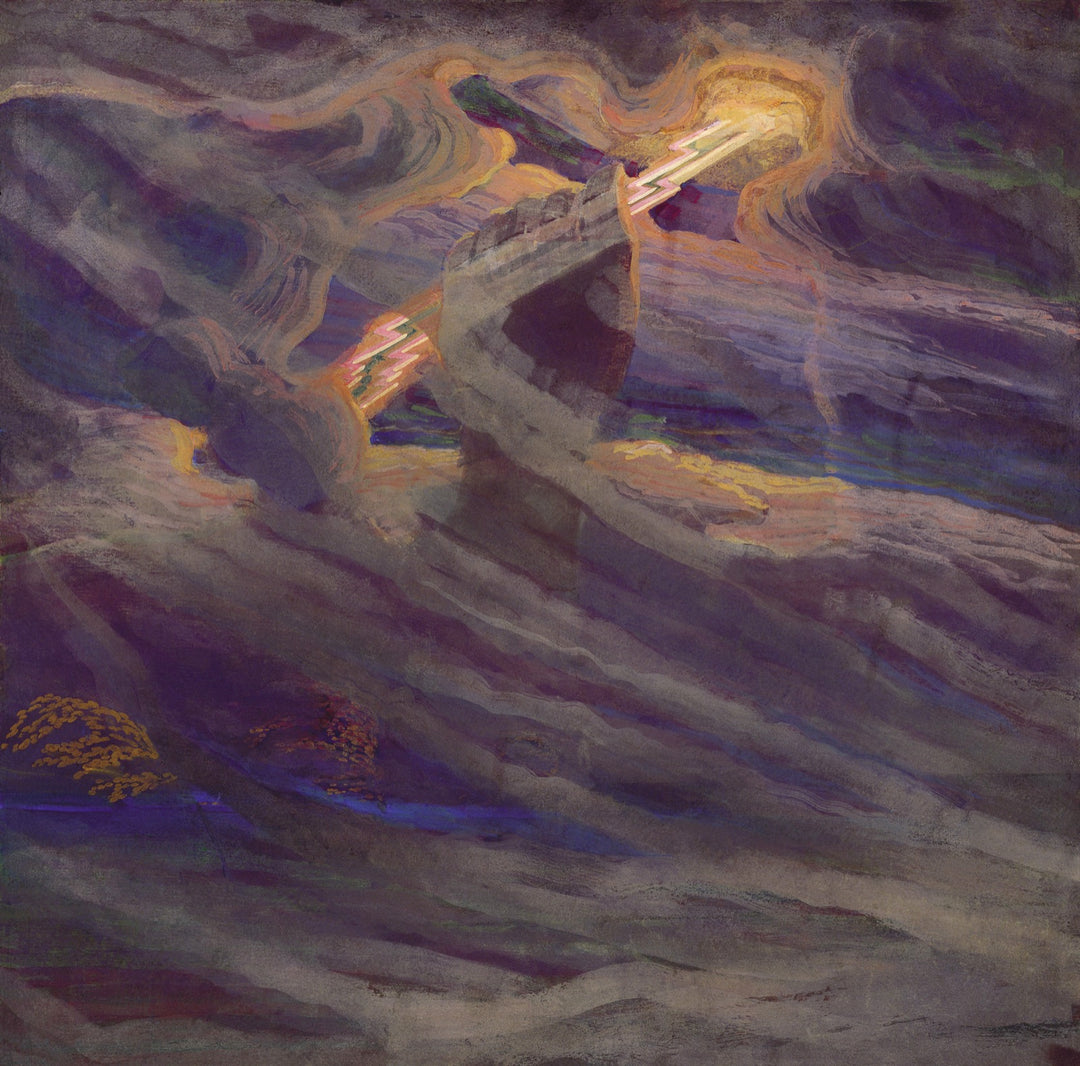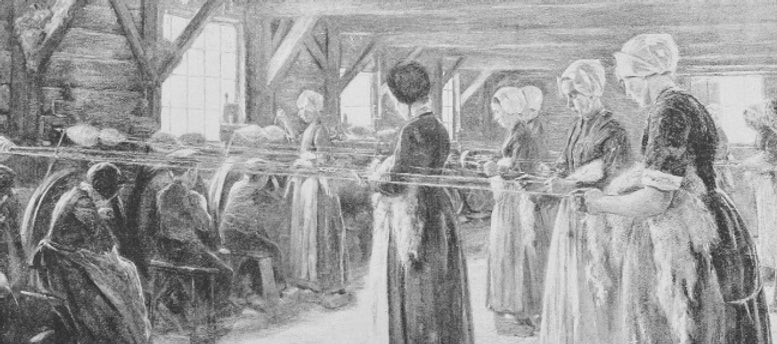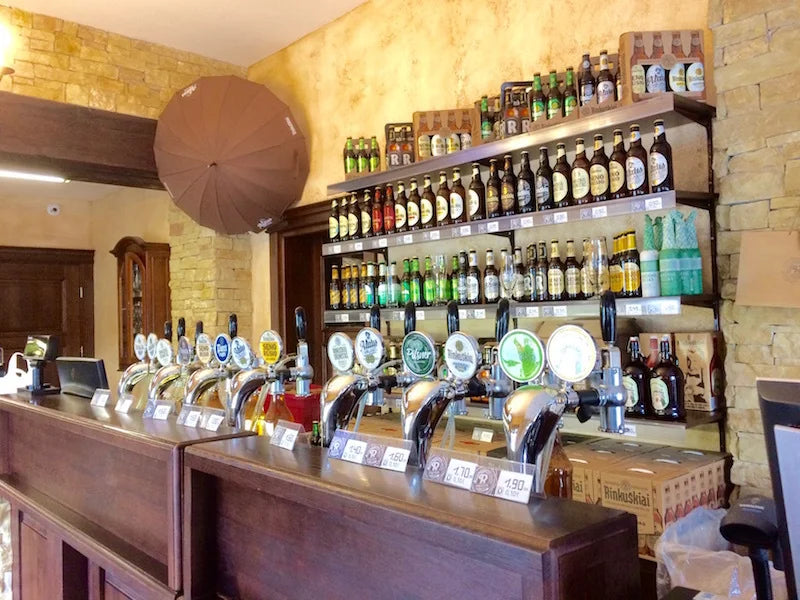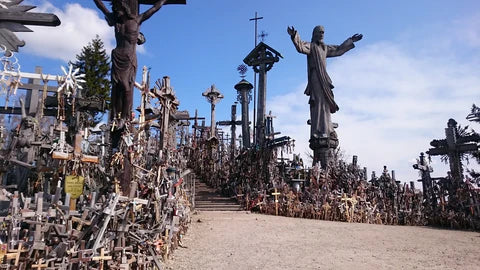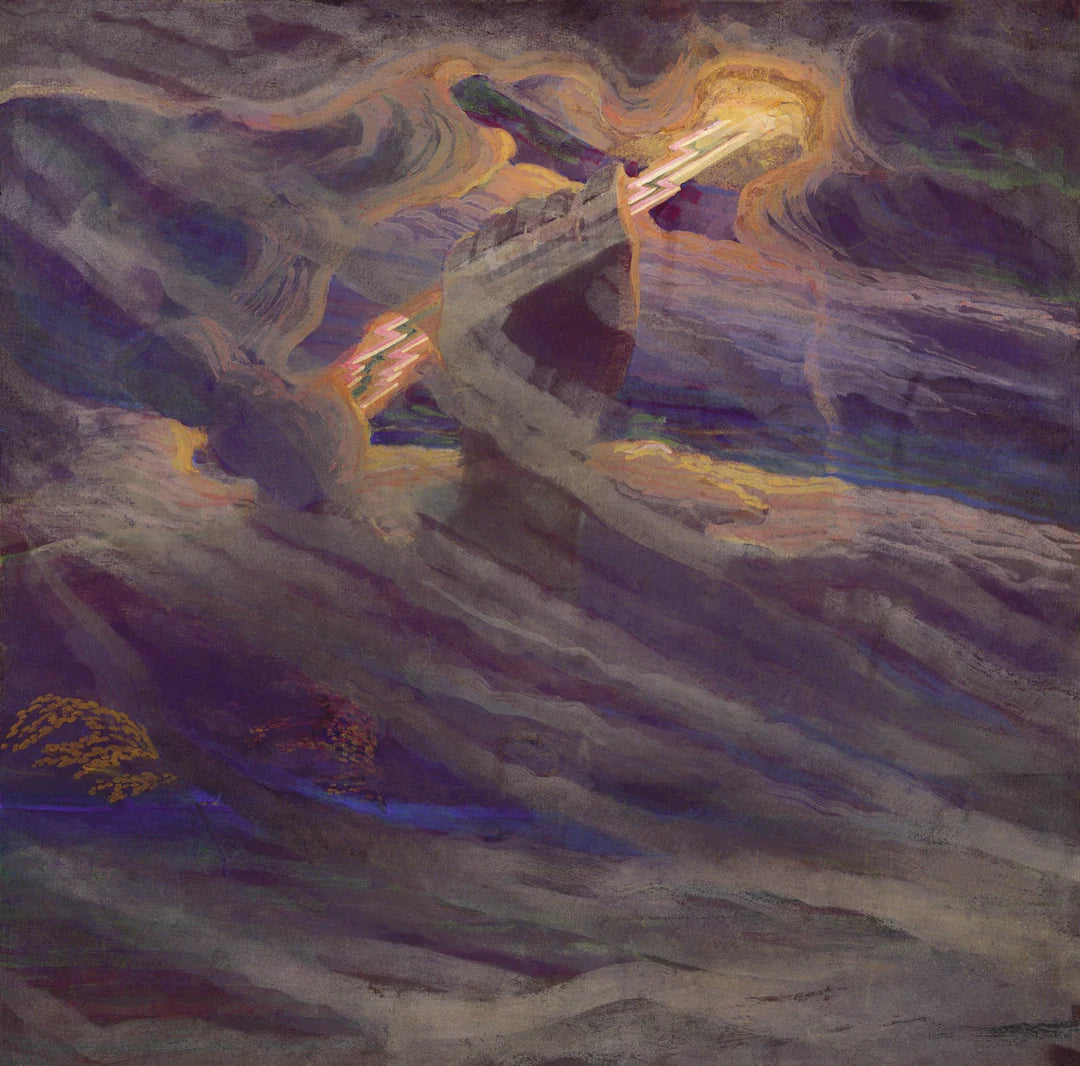A hill created by 100,000 crosses
World Heritage "Hill of Crosses"

Mysterious Appearances and Ghost Sightings
An ancient earthen mound with thousands of crosses on it, about 11 km from the town of Siauliai in northern Lithuania. Known as "Hill of Crosses", it has a complex story of war and rebellion behind it, and ancient legends and haunting visuals surround the hill. And its exact origin remains a mystery to this day.
Legend 1 "Storm and thunder that hit the church"
"There are many secrets in that hill"
According to local artist and historian Vilius Pronas. Legend has it that there used to be a church on the hill, and storms and lightning struck the church, and the rainstorms buried the people inside. The ghosts of the monks can sometimes be seen lining up at the foot of the hill around sunrise, and the mystical appearance and ghost sightings have become part of the hill's history.
Legend 2 "Valiant warriors who fell in war"
There is another legend that dates back to the early 1300s. The hill was the teaching platform of a wooden castle owned by the royal family of Samogitia (Zamaitia), a state during the Grand Duchy of Lithuania. It is said that it was destroyed by the Knights, and the surviving people of Samogitia piled up their slain comrades and buried them.
That is why it is shaped like a hill, and it is said that the souls of brave warriors who lost their lives haunt the hill at night.
Legend 3 "The cross that cured my daughter's illness"
Among the various legends about the origin of the Hill of Crosses, perhaps the most famous is the story of a father who despaired over his daughter who fell seriously ill.
In the bed where the dying girl lies, the father sees a vision of a woman and is told that if he makes a wooden cross and places it on a nearby hill, his daughter's illness will be cured. I hurried. When I got home, my daughter had met her father at the door and had completely recovered from her illness. Since then, people have placed crosses on the hill so that their prayers can reach them.
Thoughts of "rebellion" embedded in the cross
The reasons for the cross are not only positive, but also the German Crusaders' attacks in the Middle Ages, the Lithuanian uprisings against Russian Tsar Alexander II in the 19th century, and the rule of the Soviet Union, which Lithuania has faced time and time again. Some quietly show rebellion against threats.
The Soviet government made several attempts to level the Hill of Crosses in the 1960s and 1970s. Bulldozers crushed the hills and burned the crosses, and the metal and stones were discarded or used for other buildings, and those who brought crosses to the hills were fined and even imprisoned.
However, as a rebellion against religious oppression, more and more crosses were offered on the hill at midnight. And even now, more than 25 years after the collapse of the Soviet Union, the cross still stands.
A Place Beyond Religious Boundaries
Today, the Hill of Crosses also attracts pilgrims of all denominations. Christian crosses stand alongside engravings quoting Jewish verses and the Muslim Koran.
“The Hill of Crosses belongs to everyone, not to anyone. Neither the church nor the government can claim it. It's because everyone is doing it voluntarily," says Pronas.
Minimally managed by the Municipality of Šiauliai and the local Franciscan friars, the Hill of Crosses is now home to more than 100,000 crosses and other religious offerings and the number continues to grow.
“For some people, the Hill of Crosses is a place of prayer, for others it is a symbol of rebellion that lit up in dark times, and for others it is an extraordinary experience brought to bear on a boring daily life. There is nothing wrong with either way of feeling.”






October 28, 2017
BBC By Egle Gerraitite
More from
>
Lithuania
World Heritage










